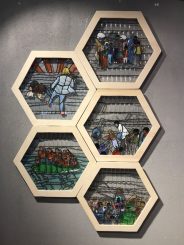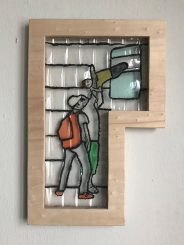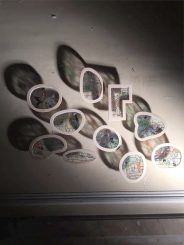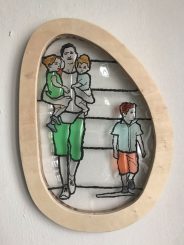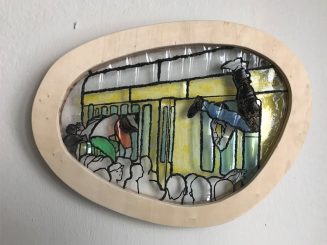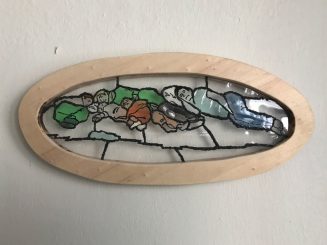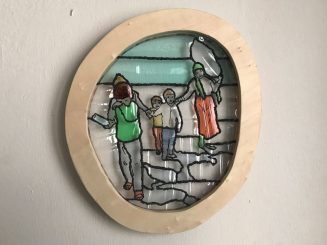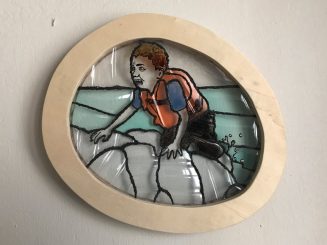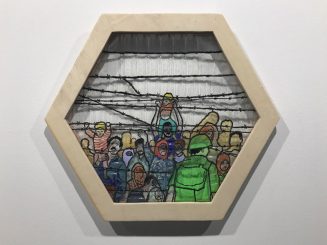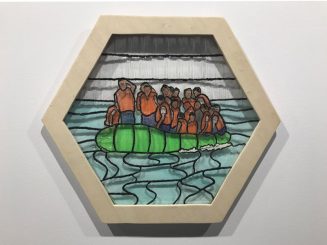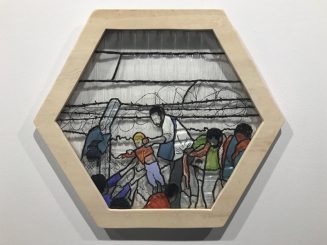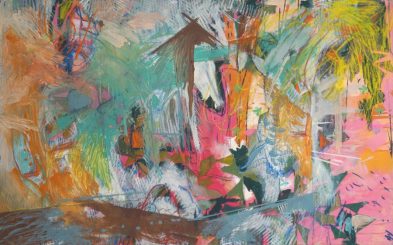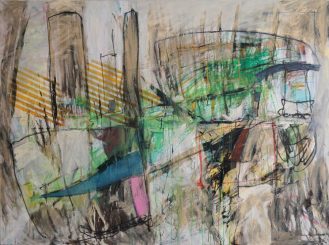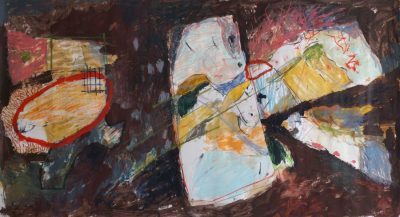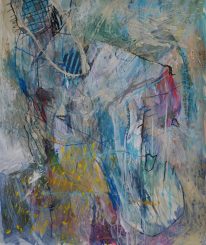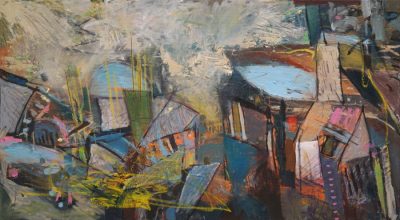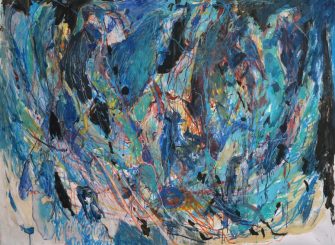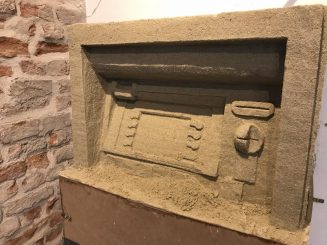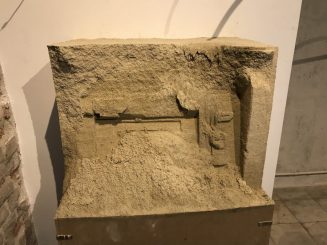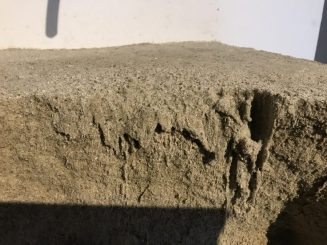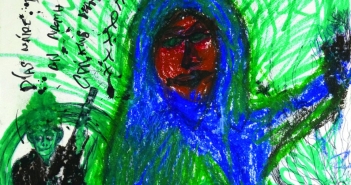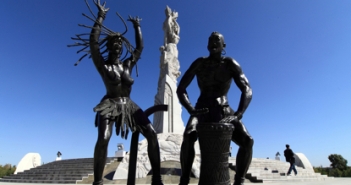I am a visual artist based in Istanbul. I was born in 1979 in Ankara, the capital city of Turkey. I studied painting at Hacettepe University in Ankara, graduating in 2003. As a student I was mostly influenced by abstract expressionism. I also began to use installations and video art. These three media are now my visual language.
I came to Istanbul in 2004, moving into my aunt’s house while she was living elsewhere. There I carved out a studio. During those first years I developed installations and even had my work displayed in prestigious exhibitions.
I was quite satisfied with life, even though I was broke financially. But since I wasn’t paying rent I could carry on working in the studio. After a while though I started taking freelance jobs as a storyboard artist for TV commercials, and moved with an advertising crowd, working for big agencies in Istanbul, which meant I could take care of myself.
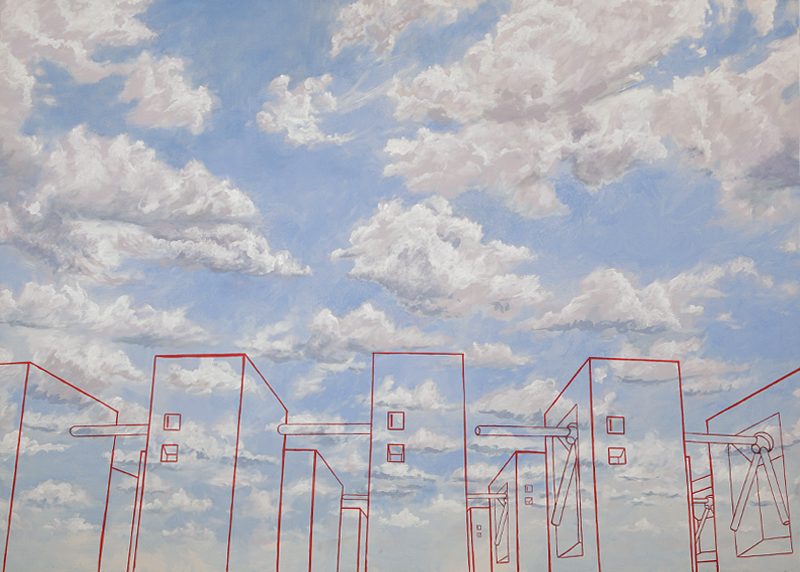
Unfortunately, after a while, I found I had no time to create my own material, as I had begun working full time for an agency. My life was heading in a direction I wasn’t satisfied with. Then I went travelling, returned, worked again, becoming a freelance producer, and directed some movies. But I was unsure of what I was doing with my life until 2010.
Then I quit the advertising world for good and became a fulltime artist. Initially, I really struggled to shift my mindset into thinking about what I was doing creatively as a business too. So the first years after leaving commercial work were slow, and I struggled to be creative.
I didn’t find it easy to be alone in front of the canvas. It took a long time to get going, but over the course of the last five or six years I have been able to create more satisfactorily. I have displayed some of my work in group shows, and also had solo exhibitions.
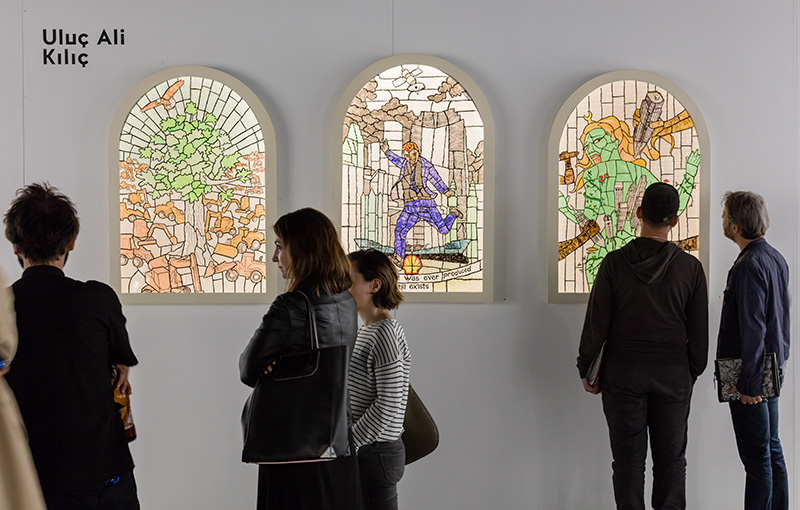
A New Language of Expression
I have developed a new visual language, all of my own, and created a series of installations in this manner. This included creating stained glass windows, made out of PET plastic bottles I recovered, that appear like paintings. I replaced glass with PET plastic to raise environmental awareness, contradicting how these materials are generally used.
My subject-matter is often the harm and destruction humanity inflicts on its surroundings, or other traumatic issues occurring in our time, such as the refugee crisis and homelessness. I try to make long-lasting artworks using plastic material which isn’t biodegradable in nature. Likewise, these artworks aim to last long in any viewers’ consciousness.
Also by simulating the atmosphere of a church or cathedral, I try to make a powerful impact on the audience. In some of the installations I am not showing simply a painting as an art object, but also use light beams to create churchlike-effects. This causes the original work to create another painting reflecting on the wall opposite. For example in my ‘Refinery of Light’ piece I created a projection mapped specifically to the contours of the work to create unpredictable patterns on the gallery wall.

Tough Times
2019 was a tough but educational year for me. I’ve been through deeply emotional experiences, struggling to come to terms with the end of a relationship, which eventually brought me face to face with my identity and subconscious. Losing a beloved one, I have felt very alone.
In this era I recommenced painting as a way of dealing with my troubles, questioning my whole being, including my dark side.
I have always wondered why I use painting as a form of visual expression. During this period painting fitted very well with my condition. First and foremost the process itself was one of the quickest ways of satisfying my hunger to create.
I find painting keeps me simultaneously in a meditative and an emotional state, bringing focus to the issues I contend with, including who am I; why am I doing what I do; and what is my aim and mission in life. These paintings kept me busy in this emotional state, which is what I needed.
Otherwise, in solitude, I develop certain obsessive-compulsive tendencies that are produced by stress, or feelings of sadness: then I generate perverse habits and self-destructive mechanisms.
Rather than falling into these habits I replace these with a new attitude towards life, and ways of thinking.
Sound and Vision
As I painted those pieces I was listening to specific songs over and over, for weeks on end. I started building the structure of the painting from the references of the sound that I was hearing, continually tracing lines and gestures.
This appears first in ‘Mahler Variations’ as I attempted to simulate the instruments in creating the visual structure of the painting. Then I let the panting ask me what it required, until it matured sufficiently.
Those paintings were like visual reflections of a dance performance. The canvas was my stage and the painting was my movement during the performances. I also recorded myself on video as I painted.
After a period listening to classical music I would then begin listening to a totally contradictory genre such as black metal for two months. Then there would be a long period of Indian classical music and so forth for each piece.
So these works can be seen as a chart of a depressive era, during which I descended into my subconsciousness. I should add that I always made my most successful works when I felt pressure on my shoulders, and was out of my comfort zone.
Under Lockdown
For any artist this period of isolation is nothing unfamiliar. Solitude brings you closer to your inner self. Artists are personalities who are living in solitude inside the community.
In my case, at forty-one-years of age, I think I am at a critical stage in life, and feel under pressure to realise my gifts.
Honestly, I always think that none of my pieces are good enough, compared to what I feel I am capable of, but lately I have been feeling that I should be more thankful for what I have received from life so far.
Now that we all are forced to stay at home and isolate from one another we have to think about how much comfort and luxury we are accustomed to. We shouldn’t view this as a handicap, but more like a gift for a short period of time, where we start to realize how greedy, spoilt and arrogant most of us are in our lifestyles.
Yes, it is hard to be suddenly changing our daily routines, but we need to adapt our minds to feel and discover who we really are, and what is most important to us. This situation puts many of us in a very hard position emotionally, psychologically and financially. It also threatens our health, but these limitations also create the pressure which leads to creativity and evolution.
In fact artists voluntarily create these conditions to produce their works of art. So in a way there’s a similarity between the current situation and the creative process itself. We should use the time as a healing process to wake up from the artificial, materialistic and selfish way of life we are accustomed to. This is the best time to discover ourselves, and call back our souls to take over for the rest of our lives.
F***ing Money
It think it is appropriate to finish this piece by referring to an installation I created in 2018 called ‘F***ing Money’, which was a sculpture replicating a cash machine inside a gallery space.
The actual artwork is not the sculpture but what happens to it. I put a motion sensor in the room which triggers a mechanism. Whenever a viewer gets close to the artwork the mechanism shoots out a tiny jet of water onto the sculpture, eroding it bit by bit. Eventually it collapsed.
I also exhibited the demolition on video 24/7 from the gallery window in loops on public display. The idea was a reflection on values, interests, labour and on the price we put on the what we create.
All artworks by © Uluç Ali Kılıç
Feature Image: Uluç Ali Kılıç in his studio. Istanbul, June 2019. Daniele Idini for Cassandra Voices.


